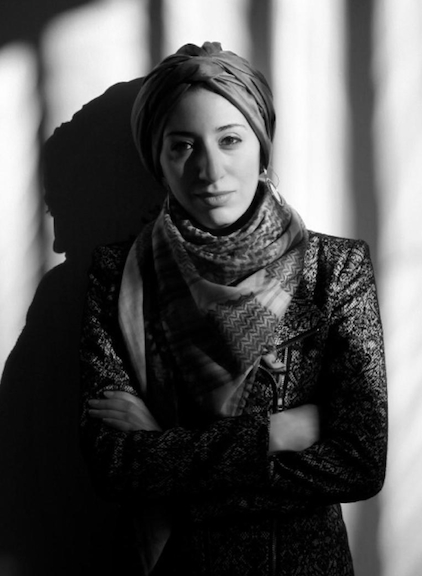Alaʾa Shehabi and Marc Owen Jones, editors, Bahrain`s Uprising: Resistance and Repression in the Gulf. London: Zed Books, 2015.
Jadaliyya (J): What made you put together this book?
Alaʾa Shehabi and Marc Owen Jones (AS & MOJ): Bahrain is small, but significant. Sadly though, it is often overlooked when it comes to writing on the region. We wanted to address the relative gap in the literature on Bahrain, and write a book that analyzed the recent uprising from multiple points of view, yet especially by those who had been directly affected somehow.
J: What particular topics, issues, and literatures does the book address?
AS & MOJ: Much of the literature on the region tends to come from a political economy, sectarianism, or even post-colonial angle. Given the contentious politics of the Arab Uprisings, and Bahrain`s own history of it, we thought resistance and repression would work as a more appropriate lens through which to frame a study of Bahrain. This concept-driven approach allowed us to study Bahrain from numerous disciplinary angles and methods, ranging from historical analysis to cultural studies and communication approaches. Across the book, the chapters generally reflect themes of social justice, postcolonialism, the role of foreign actors, human rights, and social media.
As well as different disciplinary approaches, the research was formed very much by the axiological considerations of the transformative paradigm, which focuses on social justice and the inclusion of marginalized or persecuted voices in the actual writing of texts. As such, it was important to include authors who had experienced the uprising in different ways, and the book includes chapters by local politicians, activists, poets, academics, and even an expatriate worker.

[Alaʾa Shehabi. Image via the author.]
The book is split into three parts. The first part, entitled ``voices of the condemned,” is a collection of three chapters written by those who have been persecuted in some way by the Bahraini government. Chapter one is a translation of the court testimony of Ebrahim Sharif, the secular Bahraini politician imprisoned and tortured for exercising his right to freedom of expression. In it, Sharif sets the foundations for the book, outlining the reasons, motivations, and demands of many of Bahrain`s restive citizens. In chapter two, Ali Al Jallawi, one of Bahrain’s best writers, retells with incisive humor and wit his experience of torture and imprisonment in Bahrain before the 2011 Uprising. The third chapter, perhaps a surprising inclusion, is the witness account of Tony Mitchell, an Australian expat, who gives a moving account about how seeing government oppression from his high rise overlooking the Pearl Roundabout made him realize the extent of government propaganda. The reason for the inclusion of Mitchell`s chapter is that it highlights an uncommon instance of a western expat speaking out against the brutal excesses of the Bahraini regime. Usually, such expats are expected to be politically acquiescent in exchange for a good job and a tax-free salary.
The second part of the book focuses on the different methods of resistance, and includes Amal Khalaf`s work on how the Pearl Roundabout became both a symbol of the movement and a tool of resistance. John Horne too expands on techniques of creative resistance, while Ala`a Shehabi and Luke Bhatia track the shifting trends in oppositional discourse and the government`s response to the recent human rights turn. Part three is more focused on repression, and includes Zoe Holman`s in-depth analysis of Bahrain`s often toxic relationship with Britain, and Marc Owen Jones’ writings on the emergence of the Bahraini Police. Postcolonial scholars will find much here of interest. The last chapter, still dealing with repression, moves away from history, and takes a critical look at social media and the cyberpolitics of the recent Bahrain Uprising.
A very strong theme that emerges in the book is the internationalization of both repression and resistance. The book really stresses how the ambitions and foreign policy objectives of outside powers have shaped contentious politics in the country. Bahrain, trapped between the rivalry of Saudi Arabia and Iran, and geopolitically important for the US and UK, has only nominal sovereignty. Yet the role of non-state actors is explored and stressed too. Foreign companies and states, from Korea to France, benefit from selling weapons, spyware, and other products to Bahrain. Deterritorialized and despatialized, repression has become a big global business, and we are increasingly seeing the transnational repression of local protest, especially in the realm of surveillance technologies or the supply of arms and advice. Conversely, the same is true of oppositional movements and the human rights turn, where we see more and more the transnational protest and lobbying over local issues.
J: How does this book connect to and/or depart from your previous work?
AS & MOJ: The book does not so much depart from our previous work as collate it. It also collects the disparate efforts of those who have written on Bahrain, but whose work has not necessarily formed a holistic, multifaceted narrative.
MOJ: For my own part, the work provides insight into the critical aspects of social media, and how they were used as a tool of repression in Bahrain. I also delve into the historical, cultural, and social reasons for the embedding of police deviance in Bahrain. My aims in both these chapters ties in with my general interest of seeing what factors influence repressive methods.

[Marc Owen Jones. Image via the author.]
J: Who do you hope will read this book, and what sort of impact would you like it to have?
AS & MOJ: Everyone really, but of course we would say that. We did not want the book to be an ivory-tower, niche account of what was going on in Bahrain, which is why the collection of authors, and the partitioning of the book, is so eclectic. With our background in fact-based activism and academia, the book has been rigorously edited in order to ensure not only the quality of the knowledge, but also the extent of the detail. We wanted it to be comprehensive, both in content and style, and as such, there should be much in this that appeals to historians, social movement scholars, area experts, casual readers, and those interested in politics.
J: What other projects are you working on now?
MOJ: Personally, I am working on a monograph based on my PhD, which looks at the historical evolution of methods of repression in Bahrain over the twentieth and twenty-first centuries. The book is quite expansive, but provides interesting details into the multifaceted layers of control Bahraini citizens have been, and still are, subjected to. I also have some work coming out in the next few months on democratic transition in Bahrain, and the role of social media in P2P diplomacy. I am also working on aspects of digital authoritarianism in the wider Gulf, and in particular how surveillance ought to be taken seriously as a form of political violence.
Excerpt from Bahrain`s Uprising: Resistance and Repression in the Gulf
From the Introduction: Bahrain’s Uprising: The Struggle for Democracy in the Gulf
14 February 2011, the Day of Rage, arrived. Protests began very early that morning across several villages with hundreds of citizens participating. They were met with tear gas and birdshot. By the evening, the protests had spread into the capital Manama and its suburbs. By nightfall, news and images of the first death emerged: ʿAli ʿAbdulhadi Mushaymaʿ; twenty-one years old; shot in the back with birdshot. The next day, during his funeral, another participant, Fadhel al-Matruk was again shot in the back. The funerals turned into massive protests and mourners, having just buried Mushaymaʿ in the village of Al-Daih, turned their sights to the Pearl Roundabout that happened to be just one kilometre away. A mixture of good timing, luck (given the location of funeral), and the imaginings posted earlier on Bahrain Online came together to unite people in an unplanned march towards the Pearl Roundabout. As they marched, news spread and others spontaneously left their cars to join in. Approaching the Roundabout, or al-dawar as it later became known the crowd chanted “silmiyya, silmiyya” (peaceful, peaceful) and “the people and the land are furious, our demand is a contractual constitution” (dustur ʿaqdi).
With not a policeman in sight, the Pearl Roundabout welcomed its new guests. Thousands swarmed into the space euphorically, some bowing and kissing the ground. Ibrahim Sharif, one of the older veterans to arrive at the Pearl that day, was carried along by the thronging crowds like a groom on his wedding night. A former banker, Sharif would later describe in his letters how he became consumed by this experience at the Pearl and how it allowed him to fulfil those revolutionary dreams of his youth. He spent day and night at the roundabout, becoming heavily involved in behind-the-scenes negotiations. However, it was in the early hours of the night, in small tents discussing strategies for the future with protesters and youth leaders, that Ibrahim Sharif emerged as a revolutionary leader.
On 17 February, just as protesters were settling down in their tents, the unexpected shooting began. Without warning, the area was drowned with tear gas and old and young were shot in a pre-dawn raid by the security forces. Four were killed in cold blood that night Ibrahim Sharif, having barely slept the previous two nights, ferried the injured to hospital. Tony Mitchell, an Australian expatriate, gives a blunt account of what he saw that night in Chapter Three. From his block of luxury apartments, aptly named the Pearl Towers, Mitchell had a vantage point over the roundabout. Grabbing his camcorder, he simply filmed what he saw. He did not intend to be a “citizen journalist,” nor a participant in the protests, but the next day the video footage he recorded was aired by international news channels. What was to happen to Tony after that was to change both his views and his life.
As the hospitals filled up with the dead and injured, footage of stunned doctors, agonized relatives, and the bullet-ridden bodies of young and old men punctured the stereotype of Bahrain as a calm, oil-rich Gulf backwater. Collective shock and disbelief soon escalated into collective rage. Undaunted, a few brave protesters attempted to return to the dawar, which was now besieged by tanks. This was a totally different situation to that of a few days ago. Now protesters, much smaller in number, faced the inevitable prospect of confrontational state violence. In a video that was shared millions of times over, shots fired from a barricade of tanks were seen shooting dead a young man in a green T-shirt. His name was ʿAbd al-Redha Buhmayd. Following this, the army was ordered to withdraw and the protesters returned to the Pearl Roundabout.
The encampment was rebuilt, but the innocent euphoria of reaching al-dawar on 15 February was now replaced by a melancholic and righteous defiance. Both times, the protesters were victorious in reclaiming their now sacralized territory, but at greater cost and sacrifice—literally transcribing the path in the blood of “martyrs” and adorning every corner with their images. These were needless victims but, at the same time, their exercise of agency nourished the moral faith in the movement. For another three weeks, protesters invested in rebuilding a settlement, complete with tents, stages, and sound systems. The tents represented an array of identities and purposes, and pre-existing political leftist groups as well as human rights groups, artists, women’s groups all set up stalls and tents. A media center, and a lost and found tent, as well as plentiful food and drink were available. The palm trees circling the monument were numbered to serve as signposts and meeting points, and a media center was installed. Village identities emerged as a focal point of congregation, whilst religious or sectarian identities were visibly absent. Press conferences were organized in the morning and seminars were held in the evenings, and a central stage was used for public expression all day. Protesters even brought air conditioners in preparation for the hot summer: “we will protest until the regime falls” (ʿitisam hata isqat al-nizam). Notable was the equal presence of women as both protesters and organizers, as discussed by Frances Hasso. Yet they were to stay there for only another three weeks.
On 14 March 2011, the Gulf Cooperation Council Peninsula Shield Force (GCCPSF), an armed force representing the ruling class of this eponymous coalition of five neighbouring states (excluding Oman), entered via the highway linking the island to Saudi Arabia, Bahrain’s pernicious protector. The following day, the Government of Bahrain (GoB) declared a “State of National Safety,” a euphemism for martial law. As in Libya, Bahrain was now confronted with direct foreign intervention. While the misnomer Bahrain’s GCCPSF attempts to confer some sense of regional consensus, Robert Fisk argues that the decision to cross the bridge was unequivocally a Saudi Arabian one. Writing in The Independent, Fisk stated, “they [the Saudis] never received an invitation. They simply invaded and received a post-dated invitation.” Indeed, what has been a decades-long process of Saudi cultural and political encroachment suddenly became what many opposition activists called “an invasion,” with many, including Ibrahim Sharif, referring to the Saudi troops as quwat al-ihtilal (the forces of occupation) in the perception that the primary goal was to quell the protests.
With their Saudi enablers, the Bahraini regime began to manufacture the pretext that the brutality of the crackdown and the entrance of Saudi troops were necessary in protecting Bahrain’s sovereignty from Iranian interference. The government wished to paint the movement as an Iranian-sponsored, exogenously instigated, uprising and a smokescreen intent on using democracy to install a Shiʿa theocratic state in Bahrain—a tactic that has been deployed since the Iranian Revolution in 1979. For this reason, the authorities continued to whip up sectarian discord. They demolished numerous Shiʿa religious structures and severely punished the most prominent Sunnis who participated in the protests, including a former military officer, in order to depict the opposition as almost exclusively Shiʿa. This included Ibrahim Sharif of the National Democratic Action Society, whose speech before the Court of Appeal forms Chapter One of this book.
On 21 March 2011, King Hamad announced that the security forces had foiled a foreign (read Iranian) plot. As government confidence increased, so did their assertiveness on the alleged Iranian link. The die was cast and the authorities were now unabashedly pushing the sectarian line that the opposition were agents of Iran, further inflaming sectarian tensions in Bahrain and the region as a whole. Even when the King’s appointed commission of inquiry ruled that it found no evidence of Iranian involvement, state discourse introduction barely changed. With the authorities positioning themselves as defenders against a foreign threat, repression continued with muted international criticism. As American comedian Jon Stewart noted, while US politicians and policymakers were busy galvanizing public support for intervention in Syria and Libya, their message to the Bahraini government was simply, “Hey, tone it down will ya.”
Yet the Bahraini government did anything but tone it down. Between February 2011 and May 2014, the Bahrain Center for Human Rights reported that up to ninety-eight people were killed directly by the government’s excessive use of force. This figure now is likely to be higher due to recent alleged killings by the state security services. In addition to physical coercion, killings, and the torture of activists, the government has resorted to multilayered tactics of repression to discourage dissent. During February and March 2011, at least 2,075 public sector employees and 2,464 private employees were dismissed from work “for their support for or participation in strikes during the protests.” However, it was revealed by an independent team of legal experts in the Bahrain Independent Commission of Inquiry (BICI) report that the strikes “were within the permissible bounds of the law.” Other punitive measures included withdrawing scholarships from students on government stipends who engaged in dissent. Hundreds of students were even dismissed from university for their alleged role in demonstrations and criticism of the regime. In one case, a student was reportedly dismissed for simply liking a comment on Facebook that criticized the regime. Indeed, this broad-spectrum repression targeted everything, from the banal tweet to the Pearl Monument itself.
[Excerpted from Bahrain`s Uprising: Resistance and Repression in the Gulf, edited by Alaʾa Shehabi and Marc Owen Jones, by permission of the editors. © 2015 Zed Books. For more information, or to purchase this book, click here.]
![[Cover of Ala?a Shehabi and Marc Owen Jones, \"Bahrain`s Uprising: Resistance and Repression in the Gulf\"]](https://kms.jadaliyya.com/Images/357x383xo/Bahrain_NEWTON_cover.jpg)











